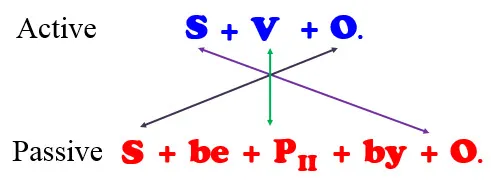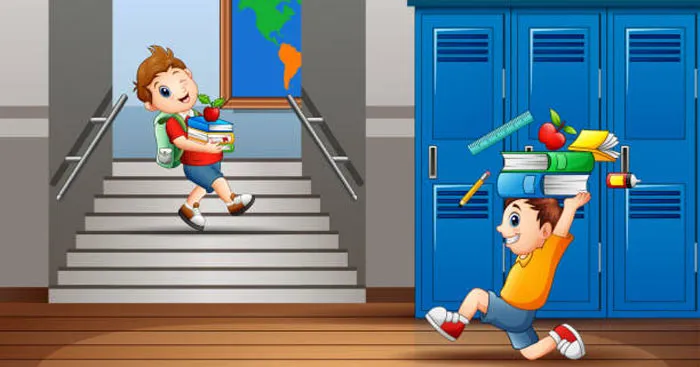Bài tập về câu bị động Tiếng Anh lớp 9 là chủ đề ngữ pháp quan trọng và thường gặp trong các đề thi vào 10. Để giúp các bạn học sinh làm quen với các dạng bài tập về câu bị động trong tiếng Anh, mời các bạn cùng theo dõi bài viết dưới đây.
Bạn đang đọc: Bài tập câu bị động trong tiếng Anh lớp 9
Bài tập về câu bị động được biên soạn rất chi tiết gồm lý thuyết, quy tắc biến đổi câu bị động, bảng công thức các thì phổ biến trong câu bị động và một số dạng bài tập. Qua đó giúp học sinh củng cố, nắm vững chắc kiến thức nền tảng, vận dụng với các bài tập cơ bản; học sinh có học lực khá, giỏi nâng cao tư duy và kỹ năng giải đề với các bài tập vận dụng nâng cao để học tốt tiếng Anh. Ngoài ra các bạn xem thêm: Bài tập thì hiện tại hoàn thành lớp 9, Bài tập Phrasal Verbs với Look lớp 9.
Câu bị động trong tiếng Anh lớp 9
1. Định nghĩa câu bị động
– Câu bị động được dùng khi muốn nhấn mạnh đến đối tượng chịu tác động của hành động hơn là bản thân hành động đó. Thì của động từ ở câu bị động phải được chia theo thì của động từ ở câu chủ động.
– Ví dụ:
The cake is made by my little brother (Chiếc bánh này được làm bởi em trai của tôi)
Trong câu này, tác giả muốn truyền đạt nhấn mạnh hành động chiếc bánh này được làm bởi em trai. Câu bị động ở đây có vai trò tuyên dương, trân trọng hành động của của người thực hiện.
2. Điều kiện biến đổi câu bị động
– Động từ (verb) trong câu chủ động phải là Transitive Verb (ngoại động từ phải có tân ngữ phía sau)
3. Cấu trúc:

Lưu ý: “be” chia theo thì của động từ
4. Quy tắc biến đổi câu bị động
– Xác định thành phần trong câu: Chủ ngữ (S)? Động từ (V)? Tân ngữ (O)?
– Xác định thì của động từ chính
– Lấy O trong câu chủ động làm S cho câu bị động. Lấy S trong câu chủ động làm O và đặt sau By trong câu bị động.
– Biến đổi V chính trong câu chủ động thành P2 (Past Participle) trong câu bị động.
– Thêm To be vào trước P2 trong câu bị động (To be phải chia theo thời của V chính trong câu chủ động và chia theo số của S trong câu bị động)
5. Bảng công thức các thì phổ biến trong câu bị động
| Tense (thì) | Chủ động (Active) | Bị động (Passive) |
| 1. The present simple (Thì hiện tại đơn) | S + V (s/es) + O | S + am/ is/ are + PII + (by O) |
| 2. The present continuous (Thì hiện tại tiếp diễn) | S + am/ is/ are + V-ing + O | S + am/ is/ are + being + PII + (by O) |
| 3. The present perfect (Thì hiện tại hoàn thành) | S + have/ has + PII + O | S + have/ has + been + PII + (by O) |
| 4. The present perfect continuous (Thì hiện tại hoàn thành tiếp diễn) | S + have/ has + been + V-ing | S + have/ has + been + being + PII + (by O) |
| 5. The simple past (Thì quá khứ đơn) | S + V-ed + O | S + was/ were + PII + (by O) |
| 6. The past continuous (Thì quá khứ tiếp diễn) | S + was/ were + V-ing | S + was/ were + being + PII + (by O) |
| 7. The past perfect (Thì quá khứ hoàn thành) | S + had + PII + O | S + had been + PII + (by O) |
| 8. The past perfect continuous (Thì quá khứ hoàn thành tiếp diễn) | S + had + been + V-ing + O | S + had + been + being + PII + (by O) |
| 9. The simple future ( Thì tương lai đơn) | S + will/ shall + V + O | S + will/ shall be + PII + (by O) |
| 10. The simple continuous (Thì tương lai tiếp diễn) | S + will/ shall + be + V-ing + O | S + will/ shall + be + being + PII + (by O) |
| 11. The simple future perfect (Thì tương lai hoàn thành) | S + will/ shall + have + PII + O | S + will/ shall + have + been + PII + (by O) |
| 12. The near future (Thì tương lai gần) | S + be going to + V + O | S + be going to + be + PII + (by O) |
| 13. Modal verbs (can, could, should, shall, may, might, must,…) | S + Modal + V-bare Inf + O | S + Modal + be + PII + (by O) |
6. Bài tập về câu bị động lớp 9
Bài 1: Viết lại những câu sau ở dạng bị động
1. She opens the book.
2. She buys a lot of alcohol.
3. They set the table.
4. I take a photo.
5. We wear blue skirts.
6. He doesn’t buy the cooker.
7. They don’t help me.
8. You do not write the essay.
9. Does that man rob the bank?
10. Does your dad pick you up?
Đáp án:
1. The book is opened by her.
2. A lot of alcohol is bought by her.
3. The table is set by them
4. A photo is taken by me.
5. Blue skirts are worn by us.
6. The cooker is bought by him.
7. I am not helped by them.
8. The essay is not written by you.
9. Is the bank robbed by that man?
10. Are you picked up by your dad?
Bài 2 Viết lại những câu sau ở dạng bị động
1. The girls are singing a folk song.
2. Mr. Thompson and his son are playing table tennis at the moment.
3. My sister is baking a cake.
4. The waitress is serving three lunches now.
5. My dad is reading the newspaper at this time.
6. They are selling cookies for Christmas right now.
7. The dog is eating its snack.
8. I am weeping the floor.
9. Anna is throwing the ball into a basket.
10. Jimmy is choosing a present for his best friend’s birthday.
Đáp án:
1. A folk song is being sung by the girls.
2. Table tennis are being played by Mr. Thompson and his son at the moment.
3. A cake is being baked by my sister.
4. Three lunches are being served by the waitress now.
5. My dad is reading the newspaper at this time.
6. They are selling cookies for Christmas right now.
7. The dog is eating its snack.
8. I am weeping the floor.
9. Anna is throwing the ball into a basket.
10. Jimmy is choosing a present for his best friend’s birthday.
Bài 3 Chuyển các câu sau thành câu bị động
1. My mother has bought this bouquet of flower in that shop.
2. Jane has found her wallet.
3. Our team has finished the report.
4. I have finished my exercise for two days.
5. He has never seen this movie before.
6. We have heard the news already.
7. The employee has signed the contract.
8. These boys have bought five concert tickets.
9. His brother has studied computer science since April.
10. My parents have taken care of my cat well.
11. We have typed these reports for 1 hours.
12. The police has found the thief yesterday.
Đáp án:
1. This bouquet of flower has been bought in that shop by my mother
2. Jane’s wallet has been found.
3. The report has been finished by our team.
4. My exercise has been fininished for two days.
5. This movie has never been seen by him before.
6. The news has been heard by us already.
7. The contract has been signed by the employee.
8. Five concert tickets have been bought by these boys.
9. Computer science has been stuđie by his brother since April.
10. My cat has been taken care well by my parents.
11. These reports have been typed by us for 1 hour.
12. The thief has been found by the police yesterday.
7. Bài tập tự luyện về câu bị động
Exercise 1: Turn these sentences into passive
1. Do they teach English here?
2. Will you invite her to your wedding party?
3. Has Tom finished the work?
4. Did the teacher give some exercises?
5. Have they changed the window of the laboratory?
6. What books are people reading this year?
7. How did the police find the lost man?
8. Who look after the children for you?
9. How long have they waited for the doctor?
10. What time can the boys hand in their papers?
Exercise 2: Give the correct form of words in following sentences
1. Toshico had her car (repair) ………….. by a mechanic.
2. Ellen got Marvin (type) ………………her paper.
3. We got our house (paint) ……………… last week.
4. Dr Byrd is having the students (write ) ………………. a composition.
5. Mark got his transcripts (send)………………. to the university.
Exercise 3: Rewrite each sentence so that it contains the word capitals
1. Candidates may not use the dictionaries (BY)
2. People said that the President was killed by a mad man (IT)
3. I didn’t realize that someone was recording our conversation (BEING)
4. They asked me some difficult questions at the interview (I)
5. I am going to move my things next week (BE)
Exercise 4: Turn these sentences into passive
1. They have her tell the story again
2. John gets his sister to clean his shirt
3. Anne had had a friend type her composition
4. Rick will have a barber cut his hair
5. I will get the dressmaker to make a new dress
6. He had a mechanic repair his car
7. She often gets the technician to maintain the heater
8. People consider that she was the best singer that Australia has ever produced.
9. It is expected that the weather will be good tomorrow.
10. A lot of people believe that the Prime Minister and his wife have separated.

